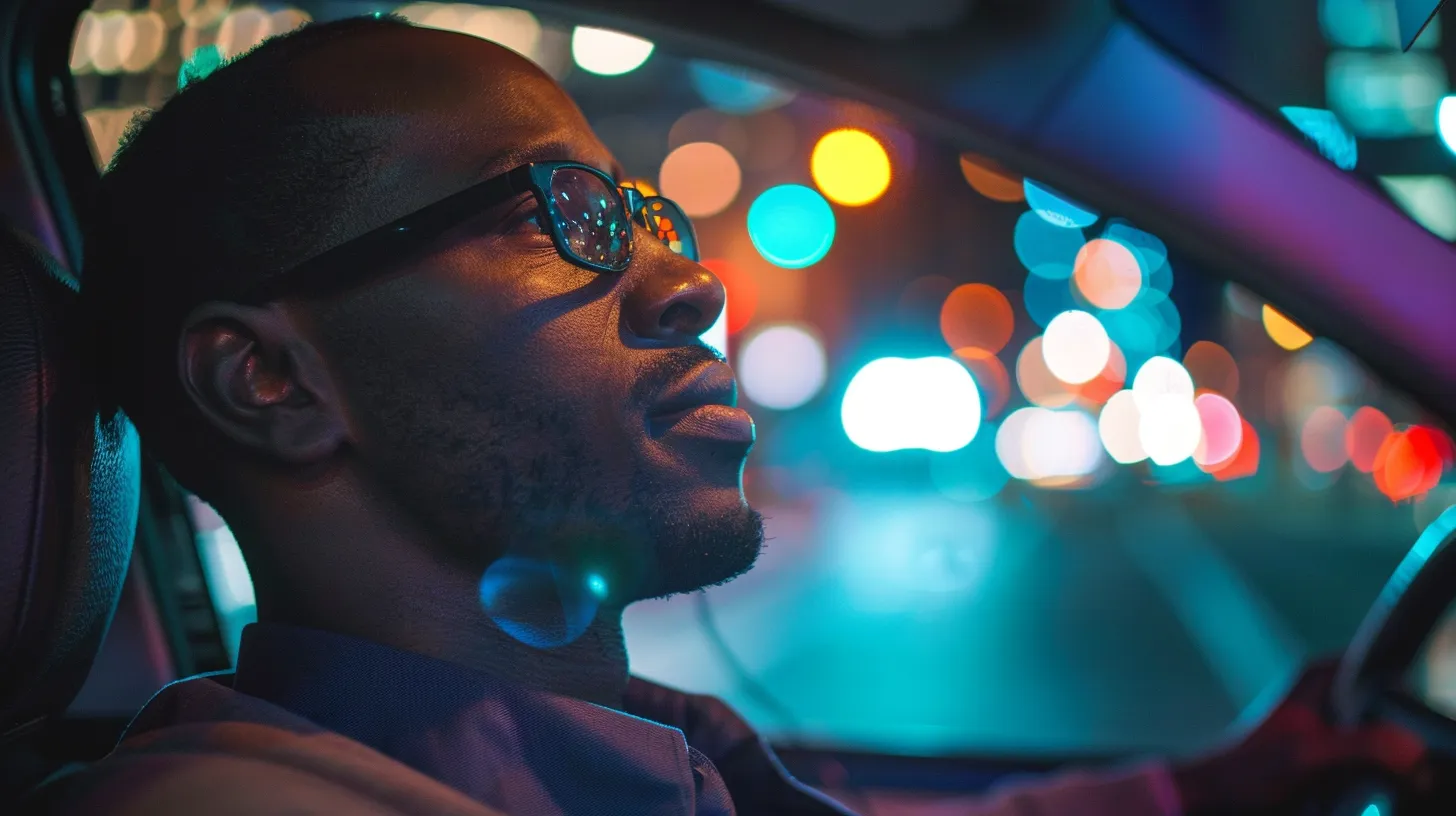If you find yourself questioning Uber’s role in an accident and what that means for you, you’re not alone. This post will guide you through the murky waters of Uber’s liability when mishaps like catastrophic injury or disputes over traffic light incidents occur. We’ll unpack how Uber’s driver status impacts who’s accountable, detail the company’s insurance policies, and walk you through the action plan if you’re involved in a Lyft or Uber accident, including dog bite scenarios. By the end of this article, you’ll understand your legal options for seeking compensation and the steps necessary to protect your rights.
Introduction to Uber’s Liability in Accidents
As ridesharing services flourish, incidents involving companies like Uber raise pressing questions about liability and passenger rights. Notably, when disputes arise from Uber-related accidents, the waters can become muddied, entangling riders, pedestrians, and even third parties in the fray. Understanding the roles of insurance companies and the doctrine of comparative negligence is critical in discerning who is liable in such scenarios. This section delineates the obligations of ridesharing companies to both passengers and the public, exploring the complexities of establishing fault and seeking recompense after an incident.
Understanding Your Rights as a Rideshare Passenger
When embarking on a journey with a rideshare service like Uber or Lyft, passengers inherently trust in the safety and accountability pledged by these companies. As part of their duty under injury law, ridesharing services must ensure a secure environment for their customers. In the unsettling event of a Lyft accident, for instance, passengers have the right to understand their options and pursue compensation. This often entails obtaining a thorough account from any witness and seeking the advice of a proficient lawyer who can navigate the complexities of rideshare accident claims.
Victims of rideshare collisions should promptly recognize the urgency in documenting the incident and securing legal counsel. A knowledgeable lawyer, experienced with the intersection of technology and injury law, will carefully assess the details of the accident, holding the liable party accountable. It’s crucial for the passenger to comprehend the nuances of duty of care in these circumstances; a concept that’s paramount when determining negligence and pursuing just recompense for any harm endured during an Uber ride. Here, the expertise of legal professionals is indispensable, guiding individuals towards a resolution that aligns with both the severity of the accident and the laws governing such cases.
The Growing Concern of Uber-Related Accidents
The escalation of Uber-related accidents brings to the forefront the question of fault and the extent to which Uber is liable for mishaps involving its vehicles. Riders, drivers, and pedestrians alike face the risk of injury, prompting a critical evaluation of rideshare safety protocols and insurance coverage. When accidents occur, identifying the responsible party becomes a complex process, involving multiple factors such as driver behavior, vehicle condition, and adherence to road laws.
As individuals increasingly rely on rideshare services, the implications of vehicle accidents extend beyond personal injury to legal considerations concerning Uber’s responsibility. The determination of liability hinges on whether the driver is seen as an independent contractor or an employee, a distinction that influences the outcome of negligence cases. In incidents where fault is attributed to Uber drivers, the company’s insurance policies and legal obligations come under scrutiny, driving the need for stronger oversight and clearer liability frameworks.

How Uber’s Driver Classification Affects Liability
The classification of Uber drivers as independent contractors rather than employees carries significant implications for the company’s legal responsibility in accidents and negligence cases. This section will explore the nuances of independent contractor status, examining how it impacts insurance coverage, particularly in relation to distracted driving incidents. Moreover, we’ll scrutinize the concept of vicarious liability and its application to rideshare companies when issues of transport safety arise, causing pain and suffering for those involved. Our focus will also extend to the specifics of Uber’s insurance policy and how it functions in the event of a collision or dispute.
Independent Contractor Status Explained
Uber drivers’ status as independent contractors rather than employees has a profound effect on vicarious liability in the event of a rideshare accident. This distinction means that Uber may not be held responsible for the actions of its drivers in the same way a traditional employer would be, potentially complicating the process for passengers to file a successful Uber accident claim.
When an accident does occur involving an Uber driver, the question of who covers costs for damages and physical therapy arises. While drivers are required to have their own insurance, Uber provides additional coverage which may apply depending on the driver’s activity at the time of the incident. This nuanced insurance landscape necessitates a clear understanding for those affected and considering a claim under rideshare accident law.
Implications for Uber’s Legal Responsibility
The classification of Uber drivers as independent contractors has a substantial impact on how plaintiffs can seek damages for accidents involving rideshare services. If a plaintiff is involved in an incident with an Uber driver, distinguished as a truck driver for the company, they may find the road to compensation fraught with challenges. Even in cases resembling medical malpractice, where the defendant‘s liability is commonly clear, Uber’s structure may obscure the direct line to accountability, demanding that plaintiffs navigate a complex web of insurance policies and terms of service.
In light of this independent contractor status, determining Uber’s legal responsibility in cases of driver negligence requires meticulous analysis of the circumstances surrounding the incident. If an Uber driver, while performing duties akin to a truck driver, causes an accident, the company’s liability is often contingent on the driver’s app status at the time. A plaintiff must understand that despite any parallels to medical malpractice claims – where damages are sought from clear defendants – rideshare incidents necessitate an informed approach, ideally facilitated by legal expertise, to pursue just compensation for their injuries.
Vicarious Liability and Rideshare Companies
Understanding the concept of vicarious liability is pivotal in cases where highway behavior by an Uber driver leads to injuries. Car accidents can result in serious harm to passengers, and when an Uber driver’s actions are in question, it is not always straightforward that the company is liable for punitive damages. The independent contractor status usually shields Uber from direct responsibility for their driver’s conduct, which stands in contrast to what might be expected if drivers were classified as employees.
The intricacy of vicarious liability in the gig economy means that the pursuit of compensation by a passenger must account for several layers of legal structuring. When injuries from car accidents occur, establishing a direct line to Uber for punitive damages hinges largely on whether the driver was logged into the app and actively engaged in a ride or en route to a passenger, a condition that affects the applicability of Uber’s insurance coverage and legal accountability.

When Is Uber Liable for Driver Negligence?
The question of Uber’s liability in the aftermath of a rideshare accident hinges on specific circumstances and the company’s own driver policies. This includes scenarios where safety is compromised due to driver distraction, inadequate screening, or even instances of drunk driving. Critical in these discussions is how Uber’s personal injury protection policies apply, shaping the conditions under which the company may stand accountable. Upcoming sections delve into the intricacies of Uber’s role in promoting responsible driver conduct and the ramifications of insufficient driver vetting processes.
Circumstances Where Uber May Be Held Responsible
Uber may be held responsible in instances where their failure to properly screen and train drivers culminates in an accident, suggesting negligence in their employment practices. Those affected by such an incident might have a viable path to pursue uber accident claims, contending that the company’s oversight led to unsafe driving conditions. It’s critical for victims to work with insurance companies hand-in-hand to dissect the specifics of the available auto insurance coverage following an Uber crash.
In scenarios where an Uber driver’s direct violation of traffic laws results in a collision, the ridesharing company‘s liability depends on the driver’s status with the app during the incident. Should the accident take place while the driver is logged into the app and providing a ride or en route to a passenger, Uber’s insurance policy might be in effect, offering grounds for the affected parties to file uber accident claims. Understanding the nuances of such insurance policies clarifies when the firm itself is on the hook for damages, rather than the driver’s personal auto insurance.
Role of Uber’s Policies in Driver Conduct
Uber enforces policies that dictate the conduct of their drivers to minimize the risk of work accidents and injuries due to negligence. These rules, if flouted by drivers leading to an accident, could cause the company to be held liable, especially if inadequate enforcement or driver training is proven. Situations involving soft tissue injuries as a result of a driver’s deviation from Uber’s safety guidelines might result in the company’s personal auto insurance policy being scrutinized for compensation claims.
In the context of driver negligence, when a passenger endures an injury during a ride, Uber may face accountability if the driver’s actions violate the company policies. For instance, if a driver, distracted and not adhering to Uber’s standards, causes an accident, the company may be responsible for the damages, potentially beyond what the driver’s personal auto insurance covers. This is particularly relevant if the accident can be linked to a systematic failure on Uber’s part to enforce its policies effectively.
Cases Involving Inadequate Driver Screening
In cases where a flawed driver screening process leads to an accident, Uber may face liability, particularly if the driver’s history could have predicted the potential for harm. For instance, a history of causing accidents that result in spinal cord injury could hold Uber accountable if such past behaviors were overlooked during the hiring phase. Here, the liability insurance of Uber may step in to compensate the victims, thereby acknowledging the company’s part in the negligence that led to the uber crash.
This responsibility is heightened when inadequate driver screening contributes to an accident, which may not have occurred had Uber conducted a comprehensive background check. For the individuals injured in such uber crashes, the path to justice often involves proving that Uber’s negligence in vetting their drivers breached a duty of care, thereby invoking the company’s liability insurance as a recourse for damages sustained in the collision.
Exploring Uber’s Insurance Coverage in Accidents
In the landscape of ridesharing incidents, Uber’s tiered insurance plan comes into sharp focus, pivotal in clarifying liability and compensation for those involved in uber car accidents. This section provides an overview of how coverage is allocated based on the driver’s app status when the accident occurs—whether it’s a dog bite, fall accident, or a more serious mishap like spinal cord injuries. We’ll also guide potential claimants through the process of filing a claim with Uber’s insurance, underscoring the importance of understanding your rights and the company’s obligations in the aftermath of a collision.
Overview of Uber’s Tiered Insurance Plan
Uber’s tiered insurance plan plays a critical role in addressing the aftermath of rideshare accidents, providing different levels of coverage based on the driver’s engagement with the app. Particularly when an accident leads to a disability, understanding the insurance policy is paramount for those affected. If the driver is en route to a passenger or during a trip, higher levels of coverage are in place, while off-duty activity is typically covered by the driver’s personal insurance, leaving a contract with clear stipulations critical for riders and third parties alike.
Victims should be acutely aware of the statute of limitations that could affect their ability to claim damages from an Uber accident. Encountering issues like property damage or incidents escalating from road rage emphasizes the importance of swift action, as Uber’s insurance provides a safety net within specific time constraints. The clarity of these insurance tiers ensures that passengers can navigate the complex waters of liability, securing the proper support in a timely fashion and safeguarding their legal rights.
Determining Coverage Based on App Status
The coverage provided by Uber in the event of a car accident depends greatly on the driver’s status with the application at the time of the incident. For example, if the driver is actively transporting a passenger or on the way to pick one up, Uber’s insurance is designed to offer a more comprehensive settlement, which might cover damages much like a regulation-mandated policy. This delineation is crucial for passengers and drivers to understand as it can affect claims for losses, including tangible damages as well as intangible ones like loss of consortium.
Conversely, when an Uber driver is not logged into the app, or between rides, their personal insurance typically steps in—a scenario that could limit the compensation available to accident victims. This demarcation becomes particularly significant in ‘slip and fall‘ cases or other indirect incidents related to Uber services, where the app status can be the deciding factor in determining the extent of Uber’s liability and the subsequent financial and supportive care provided to affected parties.
How to File a Claim With Uber’s Insurance
Filing a claim with Uber’s insurance after a motor vehicle accident involves several critical steps. Initially, report the incident directly through the Uber app or contact their support team to ensure the accident is documented appropriately. It’s important to have all relevant information at hand, including the trip details and any evidence that may support your claim such as photos or witness information. Following this, the rideshare company’s insurance representatives will typically guide you through the next stages, which may include providing further evidence or details related to the accident to arrive at a fair car accident settlement.
In cases where a claim progresses to the realm of premises liability or other legal complications, victims may experience stress and uncertainty. Seeking the help of an attorney skilled in navigating court processes can be invaluable in such instances. The attorney‘s role includes advocating on your behalf, negotiating with insurance adjusters, and ensuring that all procedural requirements for a claim, such as deadlines and documentation, are met. This support aims to alleviate the burden on claimants and contribute to achieving a resolution that reflects the gravity of their experience.

Steps to Take if Involved in an Uber Accident
If you find yourself involved in an Uber accident, taking immediate steps to protect your rights is essential. Documenting the scene to establish a duty of care breach, reporting the incident to both authorities and Uber, and seeking guidance from an accident attorney can safeguard your interests and potential income. Addressing injuries and psychological trauma promptly is crucial. The content that follows will outline the necessary actions to collect evidence, navigate reporting procedures, and underscore the importance of legal representation.
Immediate Actions to Safeguard Your Rights
After being involved in an Uber accident, it’s imperative to act swiftly to safeguard your rights. Begin by notifying the proper authorities and Uber about the incident to establish an official record. This documentation is vital for any future negotiations regarding compensation for pain and suffering. Remember that time is of the essence, and prompt action can be critical in bolstering your case, especially under Uber’s policy provisions.
Next, seek medical attention immediately for any injuries to ensure they are properly documented and treated. This step not only prioritizes your health but also provides crucial evidence for quantifying pain and suffering should you need to file a claim. Engage with an attorney experienced in handling accidents caused by rideshare services as early as possible to guide you through the complexities of insurance policies and ensure a fair negotiation with Uber and other parties involved.
Collecting Essential Evidence at the Scene
At the scene of an Uber accident in New York City, it is critical to gather evidence that may pinpoint causes such as reckless driving or assault. Capturing photos of vehicle positions, road conditions, and any property damage provides tangible proof to support your claim. If the mishap is suspected to involve driving under the influence, obtaining any available police reports or breathalyzer results can bolster the case for liability.
Witness accounts can be invaluable, especially in bustling urban environments where incidents like reckless driving are not uncommon. Should bystanders or other passengers be present at the time of the Uber accident, securing their contact details for follow-up statements can aid in painting a clear picture of the event. This step ensures that all contributing factors, whether assault or a traffic violation, are duly recorded, providing a comprehensive basis for any legal proceedings.
Reporting the Incident to Authorities and Uber
In the immediate aftermath of an Uber accident, one’s first course of action should include reporting the event to law enforcement, thereby initiating the implementation of the respondeat superior principle. This legal doctrine could hold Uber accountable for the actions of its drivers and is thus significant in potential lawsuits seeking compensation for personal injuries or the need for therapy. Alerting the authorities creates an official record, which could be pivotal when examining the driver’s conduct before a jury.
Simultaneously, notifying Uber of the accident is critical as it triggers their incident review process and potentially activates their insurance coverage. Articulating the incident’s details to Uber allows those involved to lay the groundwork for a personal injury claim, ensuring necessary documentation is in place for any legal actions or therapy claims. Transparency in these reports is paramount, as it aids in constructing a clear narrative for any resulting lawsuits, promoting a fair evaluation by a jury and a just resolution.

Seeking Compensation: Legal Options Available
In the event of an accident involving Uber, victims may question their recourse, especially in hit and run instances or when confronting negligent drivers. For those seeking to file personal injury claims against Uber or considering legal action to sue Uber, enlisting the guidance of a seasoned attorney is imperative. The subsequent sections elucidate the process of advocating for your rights, demanding attention for compromised quality of life, and navigating the complexities of the legal system to secure proper compensation.
Filing Personal Injury Claims Against Uber
Initiating a personal injury claim against Uber often starts with a nuanced evaluation of the accident circumstances, such as determining whether a background check failure or product liability played a role in the event. If, for instance, an Uber accident was the result of texting while driving or a neglected brake issue, victims stand on firmer ground when asserting negligence. It is essential for claimants to gather all pertinent information regarding the traffic conditions and driver behavior to build a coherent and powerful case for compensation.
In the complex tapestry of legal accountability, those injured due to an Uber driver’s negligence can pursue claims that address their specific damages, including medical expenses and lost wages. Legal experts versed in product liability might assess whether a vehicle defect contributed to the accident, reinforcing the claim’s legitimacy. Effective legal strategies revolve around identifying the precise faults, such as whether proper driver screening or attention to traffic laws could have averted the mishap, thereby smoothing the pathway to a successful claim.
Pursuing Legal Action Against Negligent Drivers
In cases of car accidents stemming from driver negligence, individuals may consider legal action to seek recompense for their experiences. Taking such accidents to trial can involve tort law, which deals with civil wrongs that cause harm or loss. Engaging in a lawsuit requires evidence that the driver failed in their duty of care, and pursuing this route allows for potential compensation for damages incurred.
For individuals affected on a larger scale, such as by a pattern of negligence involving multiple drivers or incidents, a class action lawsuit against Uber might be warranted. This form of collective legal action can address systemic issues within the company and hold it accountable for widespread harm caused by driver negligence. Class action suits can also offer a more efficient resolution for groups of people who have suffered similar injuries or losses due to Uber car accidents.
How an Experienced Attorney Can Assist You
An experienced attorney can be pivotal when navigating the intricate process of filing a personal injury claim against Uber. They offer strategic advice on gathering and presenting evidence, crucial in establishing the driver’s negligence or a potential disclaimer of liability by Uber. The lawyer’s expertise ensures that critical details are not overlooked and that the claimant’s case is argued persuasively, boosting the chances of a successful resolution.
Through their in-depth understanding of the legal landscape, skilled attorneys assist individuals in understanding their rights and the nuances of Uber’s insurance policies. By managing complex negotiations and advocating for clients’ interests, they work to secure appropriate compensation for damages stemming from rideshare accidents, addressing the client’s financial and emotional distress comprehensively.
Conclusion
Navigating the legal complexities of Uber’s liability in accidents is crucial for those affected, ensuring they can assert their rights and seek due compensation. The distinction between drivers as independent contractors and the nuanced insurance policies of Uber underscore the need for clear understanding in the event of driver negligence or misconduct. Prompt action, collecting sufficient evidence, and consulting with seasoned legal counsel are vital steps in effectively holding Uber accountable. Acknowledging the intricacies of rideshare liability not only empowers individuals but also reinforces the push for safer ridesharing practices and policies.





